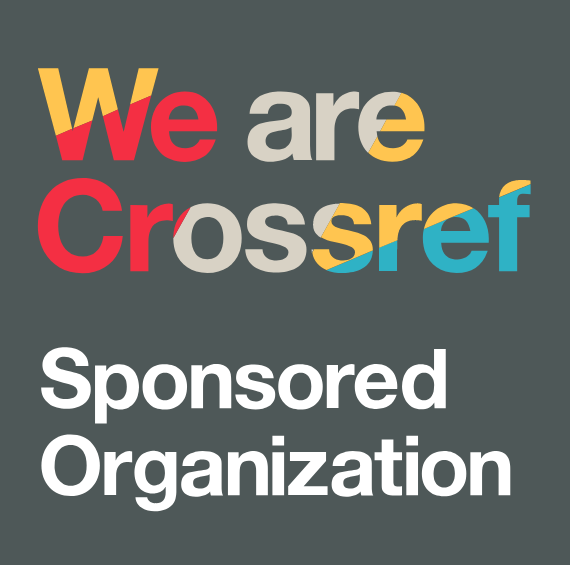Behavioural Segmentation and Loyalty Determinants in Automotive Services: A Data-Driven Analysis Using k-Means and XGBoost
DOI:
https://doi.org/10.38035/gijes.v3i3.555Keywords:
Customer loyalty, Machine learning, XGBoost, k-Means clustering, Automotive services, Customer segmentationAbstract
Customer loyalty in Nigeria’s automotive service sector has become increasingly unstable due to digital competition, pricing inconsistencies, and evolving satisfaction dynamics. Traditional models often overlook the nonlinear relationships shaping loyalty behavior. Most prior research uses linear or descriptive approaches, limiting predictive accuracy and failing to capture behavioral heterogeneity in satisfaction–cost interactions. This constrains proactive customer retention strategies. The study aims to segment customer behavior and predict loyalty determinants using machine learning algorithms to enhance decision-making in automotive service management. Secondary data were obtained from the records department of Anaval Mechanic Workshop, Awka, spanning January to December 2023. The study employed k-Means clustering for behavioral segmentation and machine learning models, Random Forest, Support Vector Machine, and Extreme Gradient Boosting (XGBoost), for loyalty prediction. The XGBoost model achieved the highest predictive accuracy (97.1%) and AUC (0.985). Customer satisfaction, total cost, and non-mechanic service expenses emerged as the strongest loyalty determinants. Machine learning effectively captured nonlinear satisfaction-cost-dynamics, outperforming traditional models. Integrating predictive analytics and cost-transparency frameworks can strengthen retention policies and inform fair-pricing regulations across Nigeria’s automotive service industry.
References
Abdi, F., Abolmakarem, S., & Yazdi, A. K. (2025). Forecasting car repair shops customers’ loyalty based on SERVQUAL model: An application of machine learning techniques. Spectrum of Operational Research, 2(1), 180–198. https://doi.org/10.31181/sor2120251
Abdullah-All-Tanvir, Iftakhar Ali Khandokar, A.K.M. Muzahidul Islam, Salekul Islam, Swakkhar Shatabda, (2023). A gradient boosting classifier for purchase intention prediction of online shoppers. Heliyon, 9(4): e15163.
Aityassine, S. (2022). Service quality and customer loyalty: The mediating role of satisfaction. Journal of Business and Retail Management Research, 16(3), 45–56. https://doi.org/10.24052/jbrmr/v16is03
Anggara, A. A., & Kaukab, M. E. (2024). Creating customer satisfaction and loyalty with price, product quality and service quality (Case study at McDonald’s customer). Quest Journals: Journal of Research in Business and Management, 12(1), 37–43
Aronu, C. O. (2014). Determining the equality of customer loyalty between two commercial banks in Anambra State-Nigeria. Business and Economics Journal, 5(2), 1–6. https://doi.org/10.4172/2151-6219.100090
Aronu, C. O., Ekwueme, G. O., & Emunefe, J. O. (2020). Investigating the equality of customer loyalty between two commercial banks in Anambra State, Nigeria: Hotelling T-square approach. Current Strategies in Economics and Management, 5, 9–13. https://doi.org/10.9734/bpi/csem/v
Breiman, L. (2001). Random forests. Machine Learning, 45(1), 5–32. https://doi.org/10.1023/A:1010933404324
Creswell, J.W. and Creswell, J.D. (2018) Research Design: Qualitative, Quantitative, and Mixed Methods Approaches. Sage, Los Angeles.
Couto, L. C., Ferreira, J. A., & Gonçalves, G. (2021). Optimization of municipal solid waste collection using GIS and linear programming. Sustainability, 13(2), 489–503.
Efron, B., & Tibshirani, R. J. (1993). An Introduction to the Bootstrap. Chapman & Hall/CRC.
Fawcett, T. (2006). An Introduction to ROC Analysis. Pattern Recognition Letters, 27, 861-874. https://doi.org/10.1016/j.patrec.2005.10.010
Fida, B. A., Ahmed, U., Al-Balushi, Y., & Singh, D. (2020). Impact of service quality on customer loyalty and customer satisfaction in Islamic banks in the Sultanate of Oman. SAGE Open, 10(2), 1–10. https://doi.org/10.1177/215824402091951
Field, A. (2018). Discovering statistics using IBM SPSS statistics (5th ed.). SAGE Publications.
Friedman, J. H. (2001). Greedy function approximation: A gradient boosting machine. Annals of Statistics, 29(5), 1189-1232. https://doi.org/10.1214/aos/1013203451
Ganiyu, R. A., Uche, I. I., & Olusola, A. E. (2012). Is customer satisfaction an indicator of customer loyalty? Australian Journal of Business and Management Research, 2(7), 14–20.
Khadka, K., & Maharjan, S. (2017). Customer satisfaction and customer loyalty. Central Department of Management, Tribhuvan University, 1–64.
Kristian, F. A. B., & Panjaitan, H. (2014). Analysis of customer loyalty through total quality service, customer relationship management and customer satisfaction. International Journal of Evaluation and Research in Education, 3(3), 142–151.
Kuhn, M., & Johnson, K. (2013). Applied Predictive Modeling. New York: Springer. http://dx.doi.org/10.1007/978-1-4614-6849-3
Kumar, S., & Zymbler, M. (2019). A machine learning approach to analyze customer satisfaction from airline tweets. Journal of Big Data, 6(62), 1–16. https://doi.org/10.1186/s40537-019-0224-1
Lavanya, C., Pooja, S., Abhay, H. K., Abdur, R., Swarna, N., and Vidya, N. (2023). Novel Biomarker Prediction for Lung Cancer Using Random Forest Classifiers. Cancer Informatics, 22: 1–15
Liaw, A., & Wiener, M. (2002). Classification and regression by randomForest. R News, 2(3), 18-22.
Meinzer, S., Jensen, U., Thamm, A., Hornegger, J., & Eskofier, B. M. (2017). Can machine learning techniques predict customer dissatisfaction? A feasibility study for the automotive industry. Artificial Intelligence Research, 6(1), 80–96. https://doi.org/10.5430/air.v6n1p8
Mittal, V., Han, K., Frennea, C., Blut, M., Shaik, M., Bosukonda, N., & Sridhar, S. (2023). Customer satisfaction, loyalty behaviors, and firm financial performance: What 40 years of research tells us. Marketing Letters, 34(2), 171–187. https://doi.org/10.1007/s11002-023-09671-w
Parasuraman, A., Zeithaml, V. A., & Berry, L. L. (1988). SERVQUAL: A multiple-item scale for measuring consumer perceptions of service quality. Journal of Retailing, 64(1), 12–40.
Reichheld, F. F., & Sasser, W. E. (1990). Zero defections: Quality comes to services. Harvard Business Review, 68(5), 105–111.
Sani, I., Karnawati, T. A., & Ruspitasari, W. D. (2024). The impact of service quality on customer loyalty through customer satisfaction of PT Multicom Persada International Jakarta. Dinasti International Journal of Management Science, 5(3). https://doi.org/10.31933/dijms.v5i
Terason, S., Hongvichit, S., & Supinit, V. (2025). Digital engagement and customer loyalty in Thailand’s automotive industry: An SEM approach. Asian Journal of Business Research, 15(1), 82–96.
Vigneshwaran, P., & Mathirajan, M. (2021). Customer satisfaction and loyalty drivers in automobile after-sales service centres. International Journal of Automotive Technology and Management, 21(2), 145–166. https://doi.org/10.1504/IJATM.2021.11592
Downloads
Published
How to Cite
Issue
Section
License
Copyright (c) 2025 Godspower Onyekachukwu Ekwueme, Harold Chukwuemeka Godwin, Chukwu Callistus Nkemjika, Ifeyinwa Faith Ogbodo

This work is licensed under a Creative Commons Attribution 4.0 International License.
Copyright:
Authors who publish their manuscripts in this journal agree to the following conditions:
- Copyright in each article belongs to the author.
- The author acknowledges that Greenation International Journal of Engineering Science (GIJES) has the right to be the first to publish under a Creative Commons Attribution 4.0 International license (Attribution 4.0 International CC BY 4.0).
- Authors can submit articles separately, arrange the distribution of non-exclusive manuscripts that have been published in this journal to other versions (for example, sent to the author's institutional repository, publication in books, etc.), acknowledging that the manuscript has been published for the first time in GIJES.

























